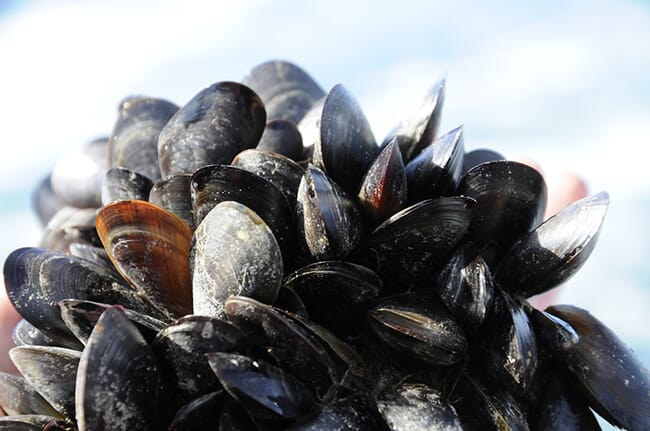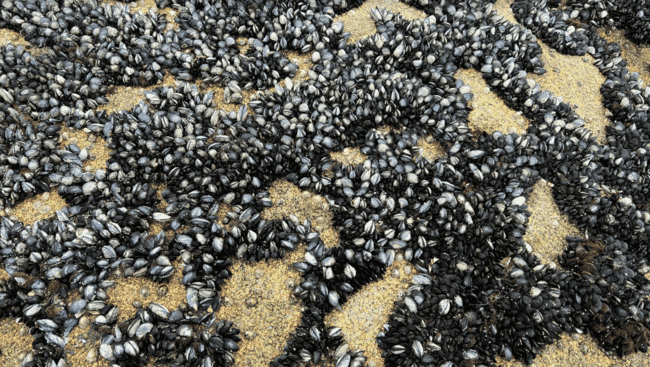
© SAMS
Recently, a research team led by Professor Sun Song from the Institute of Oceanology of the Chinese Academy of Sciences (IOCAS) has determined the critical threshold of dissolved oxygen (DO) concentration that allows blue mussels to survive. Over a 16-day experimental period, the research team tested different dissolved oxygen ranges – from 0.5 to 2.0 mg per litre on the blue mussels. They further assessed the impact of DO fluctuations and poor water quality, and analysed the responses of metabolic rate and several key enzymes to identify possible physiological stresses.
The blue mussel Mytilus edulis – a is a common species of the family Mytilidae – is widely distributed and cultured in coastal waters. It plays an important role in the food web and carbon cycle. However, as coastal eutrophication rapidly worsens in many regions, the intensity and duration of hypoxic events increases tremendously. This poses a great threat to blue mussels. However, the way hypoxic stress influences mussel survival or their population densities remains unknown.
According to the results, the critical threshold of DO for mussels kept in hypoxic conditions was 0.7 to 0.8 mg per litre, below that threshold, survival rates dropped drastically – from nearly 80 percent to less than 38 percent. When hypoxia was combined with DO fluctuations or with poor water quality, the threshold rose further and the mussels suffered higher mortality rates due to the combined threats.

In the following physiological and biochemical analysis, the researchers found that the blue mussel was an oxygen conformer that depressed its respiration rate as well as the individual’s total energy requirement when the DO concentration fell below 5 and 6 mg L-1.
Among all the enzymes analysed, acid phosphatase and alkaline phosphatase were the most sensitive ones, suggesting that a compromised immune response was another important factor challenging the survival of blue mussel in addition to energy deficiency.
In general, the blue mussel has a strong tolerance against hypoxia, and a moderate hypoxia event is less likely to cause mass mortality. “However, it is worth noting that the survival rate was significantly lower when the DO was at a moderate level of 1.0 mg L-1, but the experimental conditions included a doubled population density, no water change, no water purifier, and no Ultraviolet lamp illumination,” said Li Qiao, first author of the study.
“Thus, we strongly recommend that both the DO concentration and the spread of pathogens should be closely monitored in blue mussel mariculture, and that the stocking density should be relatively low under a risk of hypoxic conditions.”
“The findings will help to predict the fate of blue mussels under increased hypoxic events and provide scientific advice for mariculture management,” said Professor Sun.




